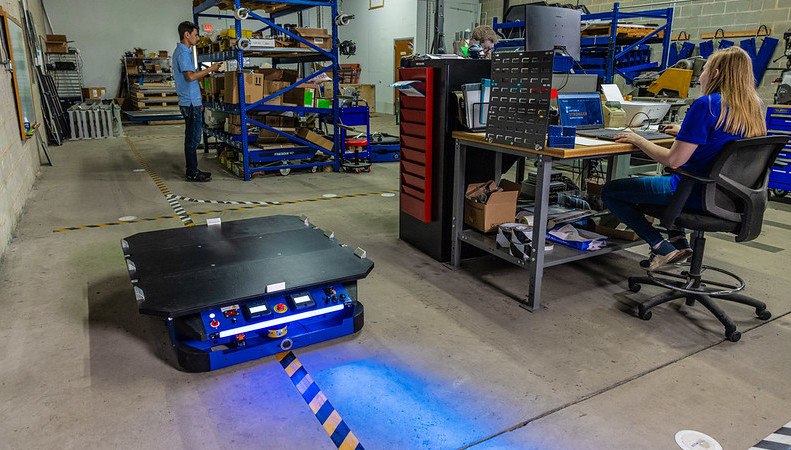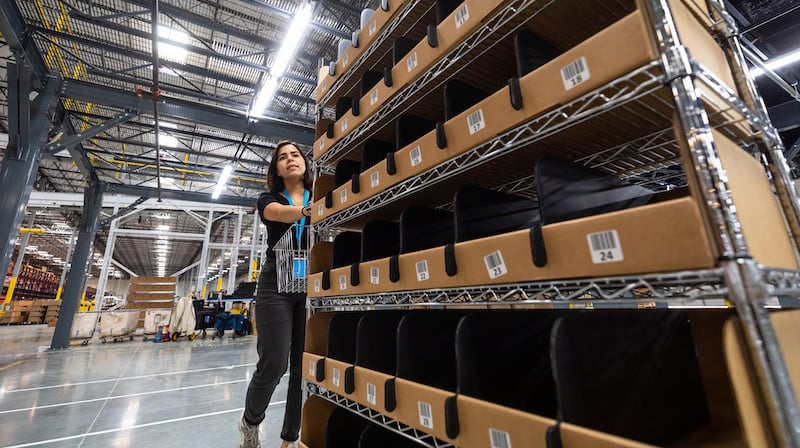A 2020 forecast predicted that 60% of the U.S. workforce will be enabled with mobile devices by 2024. That figure includes knowledge workers and frontline employees in fields, including retail, healthcare, field service, construction, warehousing, and others.
That prediction was made before the 2021 start of the pandemic-spurred Great Resignation, during which American workers have quit their jobs at a rate of millions every month. The resulting labor shortage is especially acute among frontline workers, who in 2020 accounted for 57% of all U.S. workers—but only 49% of mobile-enabled employees.
Moving forward, enterprise mobility strategies and EMM device management will be key differentiators for businesses to succeed at recruiting and retaining workers in a competitive labor market. What’s driving this trend? It’s become clear that many knowledge workers can (and now expect to) work from anywhere, but that’s not all.
A shortage of frontline and other workers means employers need to make tasks easier, more efficient, safer, and more satisfying if they expect to keep the employees they have. That’s especially true if they intend to recruit more employees and grow.
On the other hand, businesses that opt out of integrating enterprise mobility services may find themselves even more short-staffed as those in-demand workers find better opportunities.
Here are a few ways optimally managed mobility can help improve recruiting and retention, increase efficiency and productivity, and make work better for employees at every organizational level.
Mobility: Not Just for Information Workers
It’s easy to understand the impact of mobility on the typical knowledge worker. Remote work’s benefits are well understood: fewer commutes, better balance between work and family, more flexibility, and greater productivity for some workers doing highly focused tasks.
But enterprise mobility management may have even more to offer frontline and other operations-critical workers. From simple tasks like time tracking and reporting to more complex scheduling, workload management, and even regulatory compliance, mobile devices and automation can speed, streamline, and simplify jobs for frontline employees in just about every industry. That can mean doing more with fewer people—and with less pain.
Lots of industries stand to benefit by implementing enterprise mobility, but the advantages of mobile workforce management can make for especially low-hanging fruit in these sectors:
- Retail
- Warehousing and distribution centers
- Transportation and logistics
- Field service
Retail
Retail store employees serve customers, ring up sales, check inventory, find items in-store, get product information for customers, and much more. The more tasks they can complete with a single, handheld device, the faster and more productive they can be. Plus, as more retailers move toward omnichannel fulfillment, workers at retail stores need to quickly and efficiently move between customer service and fulfillment roles. With limited workers, all those demands can add up to a recipe for frazzled people. Mobility solutions can help smooth operations, help employees feel empowered on the job, and keep them at work.
Warehousing and Distribution Centers
Mobile devices and applications prevent worker errors and make it easier and faster to fulfill tasks all throughout distribution centers. When devices and equipment work optimally, so do warehouse employees—that matters, especially because many workers in these environments are paid based on performance. DCs that don’t provide devices, or whose devices and systems are outdated, slow, or difficult to use, shouldn’t be surprised when workers look for better opportunities.
Transportation and Logistics
Mobility and data access have had ongoing impacts on compliance-related record-keeping, inspections, hours of service logs, and reporting, as well as operations-focused tasks like delivery scheduling, mapping, and communication. As a result, DOT compliance, driver safety, and control over deliveries can all see improvements when mobility solutions are added and correctly managed. And, since technology developments have made it easy to move all these essential tasks to a single device, users can have a seamless and simplified experience on the job. That translates to optimizing time on the job: less time reporting, more productive work time.
Field Service
Field service productivity is also a prime target for enterprise mobility strategies. Scheduling workers’ duties, dispatching teams, locating and monitoring fleet vehicles, ensuring driver safety, troubleshooting and repairs, even reporting and invoicing from the field are all tasks that mobility can simplify. A more connected field workforce can be a more responsive and effective one.
Potential Benefits of Implementing Mobility for More Workers
Implementing enterprise mobility is a bit more complex than purchasing devices and assigning them to employees, but the payoff can be significant. Depending on workers’ roles, the advantages can include:
- More effective employee scheduling and time tracking
- Simplified employee training and easier access to information
- Improved resource allocation and asset sharing
- More accurate inventory tracking and management
- Streamlined reporting and compliance activities
- More responsive communication
- Better customer service
- Quicker and more accurate order fulfillment
- Fewer product returns
- Reduced employee turnover
Companies that implement enterprise mobile strategies and get devices within reach for onboarding, training, and day-to-day tasks should leverage that point of differentiation in recruiting conversations. Why? Workers are paying attention and looking for work environments that empower them to be more effective and productive—especially when the difference can increase their earning potential.
Start with Expert Help
No two organizations are exactly alike, so there’s no single path toward implementation that works for every enterprise. But there is a recipe for success. Working with an experienced team of experts helps ensure your strategy is built on a solid foundation that starts with in-depth learning about your current state, needs, and goals. Small-scale pilot programs refine your strategy and help secure leadership buy-in, and smooth, controlled deployments enable your enterprise mobility management program to grow with you.
Learn more about what it takes to get started. Download our free Beginner’s Guide to Enterprise Mobility Implementation. Click below to claim your own copy today—you might just be surprised at how simple your first step could be.







